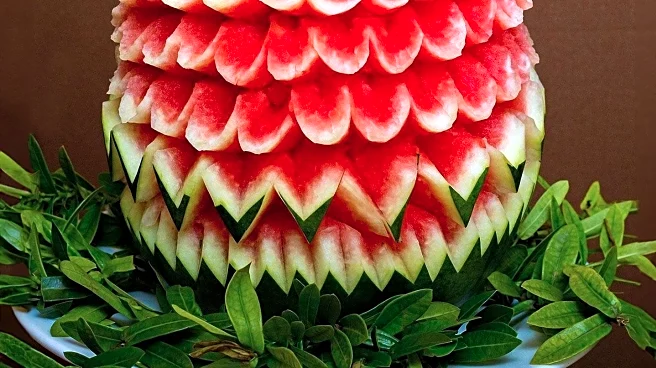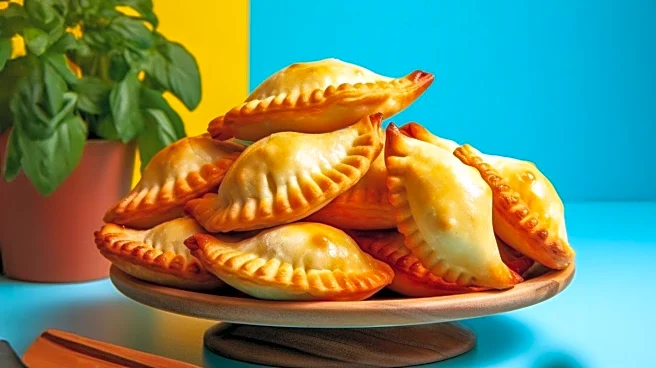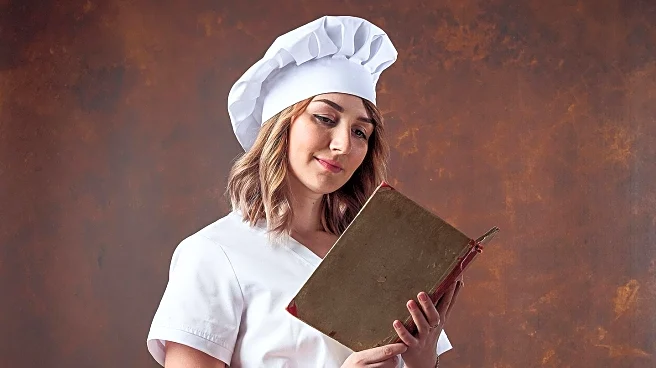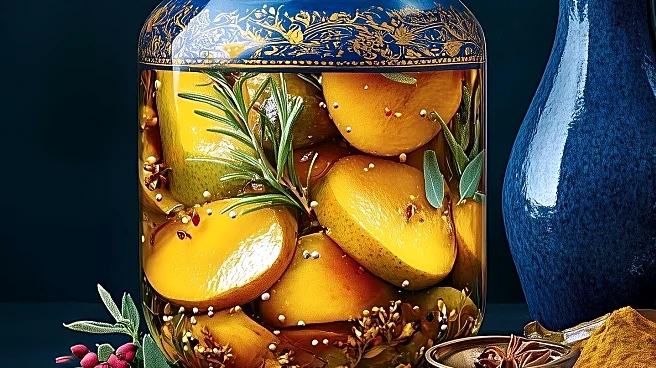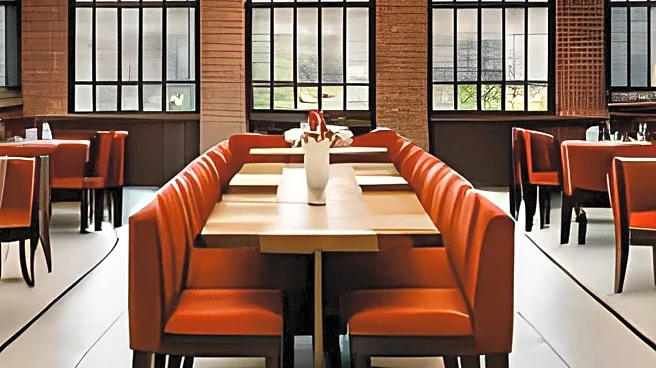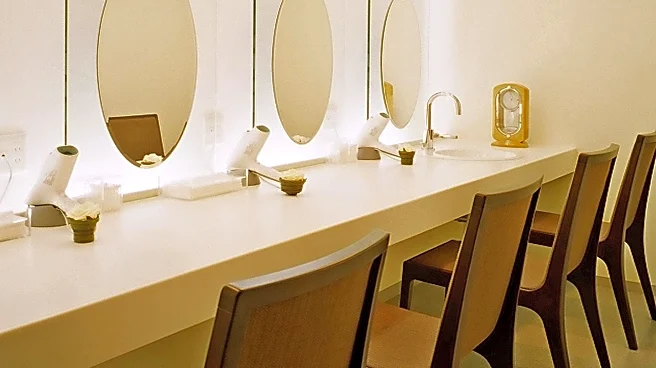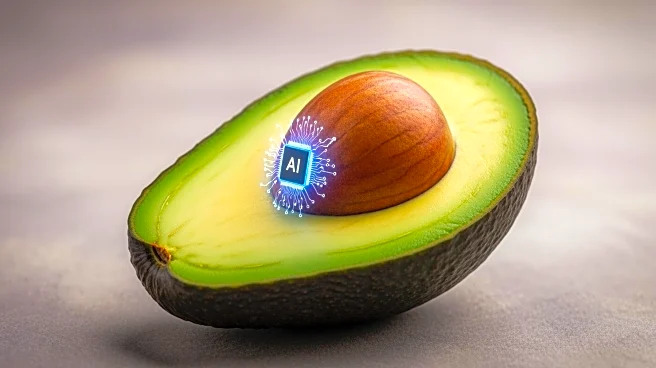What's Happening?
A new wave of food artists is redefining culinary experiences by integrating food into art installations, exhibitions, and pop-up events. These artists are taking food out of its traditional context and presenting
it in imaginative ways that evoke amusement, curiosity, and awe. The trend is gaining traction, particularly in public spaces, as digital fatigue grows and people seek more tactile and visually engaging experiences. Notable figures like Laila Gohar are leading the charge, having collaborated with high-profile brands such as Hermès and Byredo to infuse fashion shows and dinner parties with dramatic and whimsical food art. This movement is characterized by its interactive nature, offering unique opportunities for audiences to engage with food in artistic settings.
Why It's Important?
The rise of food art installations reflects a broader cultural shift towards experiential and interactive events, driven by a desire for more engaging and memorable experiences. This trend has significant implications for industries such as hospitality, event planning, and marketing, as businesses seek to differentiate themselves by offering unique and immersive experiences. Food art installations can serve as powerful marketing tools, attracting attention and creating buzz around brand launches and events. Additionally, this movement highlights the growing intersection between art and culinary practices, opening new avenues for collaboration and innovation in both fields.
What's Next?
As food art continues to gain popularity, more artists are expected to explore this medium, leading to increased diversity and creativity in culinary art installations. Public spaces may see more frequent and varied food art events, providing opportunities for community engagement and cultural enrichment. Businesses and brands may increasingly incorporate food art into their marketing strategies, leveraging its visual appeal and interactive nature to captivate audiences. The trend may also inspire new collaborations between artists, chefs, and event planners, fostering innovation and pushing the boundaries of traditional culinary experiences.
Beyond the Headlines
The emergence of food art installations raises questions about the sustainability and ethical considerations of using food as a medium. As the movement grows, artists and organizers may need to address concerns related to food waste and resource use, ensuring that installations are environmentally responsible. Additionally, the trend highlights the evolving role of social media in shaping cultural practices, as platforms like Instagram play a crucial role in popularizing food art and driving its visibility.
